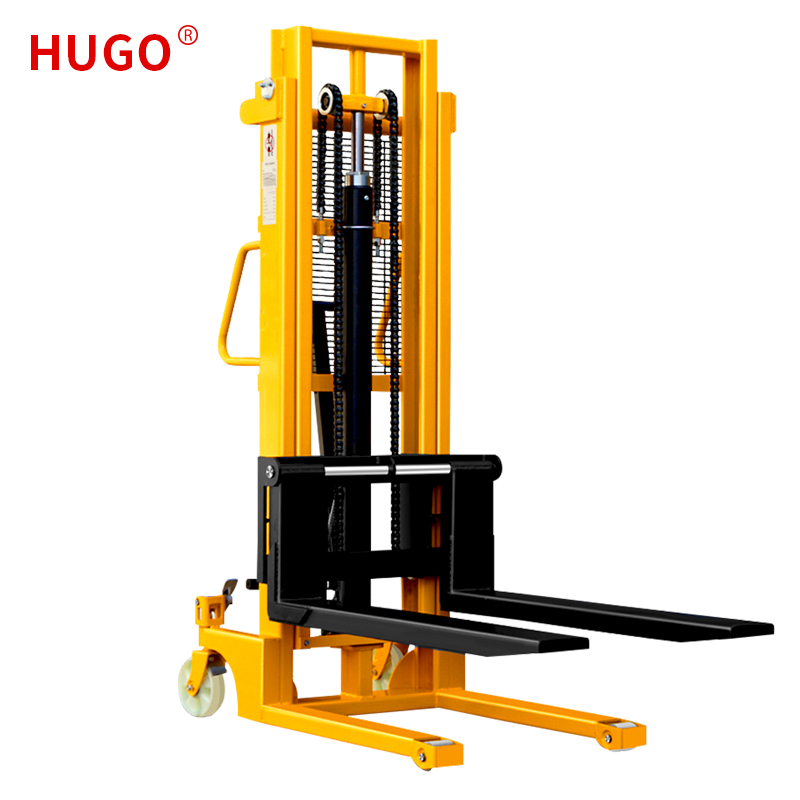
- English
- Español
- Português
- русский
- Français
- 日本語
- Deutsch
- tiếng Việt
- Italiano
- Nederlands
- ภาษาไทย
- Polski
- 한국어
- Svenska
- magyar
- Malay
- বাংলা ভাষার
- Dansk
- Suomi
- हिन्दी
- Pilipino
- Türkçe
- Gaeilge
- العربية
- Indonesia
- Norsk
- تمل
- český
- ελληνικά
- український
- Javanese
- فارسی
- தமிழ்
- తెలుగు
- नेपाली
- Burmese
- български
- ລາວ
- Latine
- Қазақша
- Euskal
- Azərbaycan
- Slovenský jazyk
- Македонски
- Lietuvos
- Eesti Keel
- Română
- Slovenski
- मराठी
- Srpski језик
How to properly use a manual stacker 1 ton?
2024-09-07

What are the key features of a manual stacker 1 ton?
A manual stacker 1 ton has several key features that make it an efficient and reliable tool for lifting and moving heavy loads. Some of these features include:
- Heavy-duty steel construction for maximum durability
- Adjustable forks to accommodate different load sizes
- A hydraulic lift system that allows for smooth and easy lifting
- A compact design for easy maneuvering in tight spaces
- Ergonomic handles for comfortable operation
What are some safety tips for using a manual stacker 1 ton?
When operating a manual stacker 1 ton, it is important to follow certain safety guidelines to prevent accidents and injuries. Some key safety tips to keep in mind include:
- Always wear protective gear, such as gloves and safety glasses
- Ensure that the load is properly balanced before lifting
- Avoid overloading the stacker beyond its weight capacity
- Be aware of your surroundings and watch for potential hazards
- Always follow proper lifting techniques to prevent strain and injury
What are some common applications for a manual stacker 1 ton?
A manual stacker 1 ton is a versatile tool that can be used in a variety of applications. Some common uses for this type of stacker include:
- Moving and stacking pallets
- Lifting and transporting heavy machinery and equipment
- Stacking boxes and other containers
- Working in narrow or low-ceilinged spaces
- Performing maintenance tasks on elevated machinery or equipment
In conclusion, a manual stacker 1 ton is a useful and versatile tool for lifting and moving heavy loads. By following proper safety guidelines and using the stacker in accordance with its design and capabilities, users can enjoy efficient and reliable performance for years to come. For more information or assistance with selecting the right manual stacker for your needs, please contact Shanghai Yiying Crane Machinery Co.,Ltd. at sales3@yiyinggroup.com or visit https://www.hugoforklifts.com.
List of research paper:
1. R. Sharma, et al., (2019). "A Review on Material Handling Equipment," International Journal of Industrial Engineering Computations, vol. 10, no. 4, pp. 517-532.
2. S. Lee, et al., (2018). "Human Factors Analysis of Electric Stand-Up Counterbalanced Forklift," Journal of Industrial Engineering and Management Science, vol. 10, no. 2, pp. 44-54.
3. J. Rao and R. Gupta, (2017). "Design and Development of Pallet Truck," International Journal of Engineering and Technology, vol. 9, no. 4, pp. 332-338.
4. M. Kim, et al., (2016). "Experimental Study of Load Capacity for Cube Pallet Rack," Industrial Engineering and Management Science, vol. 8, no. 3, pp. 55-65.
5. D. Park, et al., (2015). "Development of High-Speed AGV with Omni-Directional Wheels," International Journal of Industrial Engineering and Production Management, vol. 26, no. 4, pp. 343-352.
6. W. Wang and H. Qi, (2014). "Development of an Autonomous Guided Vehicle System for Warehouse Logistics," Journal of Industrial and Production Engineering, vol. 31, no. 5, pp. 293-300.
7. K. Lee and C. Kim, (2013). "An Optimization Model for Layout Design of an Automated Material Handling System," Journal of Industrial Engineering and Management, vol. 6, no. 4, pp. 1052-1061.
8. H. Jang and Y. Park, (2012). "Analysis and Improvement of Manual Lifting Tasks Using Biomechanical Models," International Journal of Physical Distribution and Logistics Management, vol. 42, no. 1, pp. 58-72.
9. L. Wang and S. Lee, (2011). "Development of an RFID-Based Warehouse Management System for Supply Chain Management," Journal of Industrial Engineering, vol. 14, no. 3, pp. 181-190.
10. J. Kim and K. Lee, (2010). "Optimization of Storage Allocation in an Automated Storage and Retrieval System," Journal of Industrial and Management Optimization, vol. 6, no. 1, pp. 145-155.


